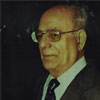Researchers from the Department of Physics and Institute of Space Sciences and Astronomy at the URSI conference in Gran Canaria. From left: Dr Iman Farhat, Julian Bonello, Prof. Kristian Zarb Adami, Dr Alessio Magro, Denis Cutajar, Dr Lourdes Farrugia and Prof. Charles V. Sammut.
Members of the Institute of Spaces Sciences and Astronomy (ISSA) and the Department of Physics Electromagnetics Research Group (EMRG) participated actively in the second URSI Atlantic Radio Science Meeting in Gran Canaria, from 28 May to 1 June.
Members of the Institute of Spaces Sciences and Astronomy (ISSA) and the Department of Physics Electromagnetics Research Group (EMRG) participated actively in the second URSI Atlantic Radio Science Meeting in Gran Canaria, from 28 May to 1 June.
ISSA presented the latest results from the Square Kilometre Array (SKA) prototype that has been deployed in the Western Australian desert. Prof. Kristian Zarb Adami co-chaired the Radio Astronomy Commission sessions, and on behalf of the Low-Frequency Aperture Array consortium presented the results of the first prototype.
Dr Alessio Magro, co-authored more than three papers describing the prototyped system in further detail, and how the software developed has been used in conjunction with collaborators from the Sardinia Radio Telescope, to be deployed on other telescopes. Additionally, Mr Denis Cutajar and Dr Iman Farhat presented the UAV-beam pattern characterisation system, which is a novel method for calibrating antennas using UAVs that is showing great promise as the possible calibration and antenna measurement route for future radio instruments.
Dr Alessio Magro, co-authored more than three papers describing the prototyped system in further detail, and how the software developed has been used in conjunction with collaborators from the Sardinia Radio Telescope, to be deployed on other telescopes. Additionally, Mr Denis Cutajar and Dr Iman Farhat presented the UAV-beam pattern characterisation system, which is a novel method for calibrating antennas using UAVs that is showing great promise as the possible calibration and antenna measurement route for future radio instruments.
The EMRG, led by Prof. Charles Sammut, also had an important role in a different session, with Mr Julian Bonello giving a presentation on the most recent results on the dielectric properties of lung and how these vary with temperature. This work was of great interest to the microwave medical applications community, especially for those developing medical devices for treatment of diseases by microwave ablation and hyperthermia.
This presentation was part of a convened session on electromagnetic therapeutic applications, co-chaired by Dr Lourdes Farrugia and Dr Emily Porter from the National University of Ireland, Galway, with participation from members of the COST Action network - CA17115, MyWAVE, which is the first COST Action led by Malta through the EMRG. During this session, the main challenges of electromagnetic therapeutic applications were highlighted and some of the latest advancements in the field have been presented and are enhancing knowledge of all aspects of electromagnetic hyperthermic technologies for the benefit of the research community.
This presentation was part of a convened session on electromagnetic therapeutic applications, co-chaired by Dr Lourdes Farrugia and Dr Emily Porter from the National University of Ireland, Galway, with participation from members of the COST Action network - CA17115, MyWAVE, which is the first COST Action led by Malta through the EMRG. During this session, the main challenges of electromagnetic therapeutic applications were highlighted and some of the latest advancements in the field have been presented and are enhancing knowledge of all aspects of electromagnetic hyperthermic technologies for the benefit of the research community.



